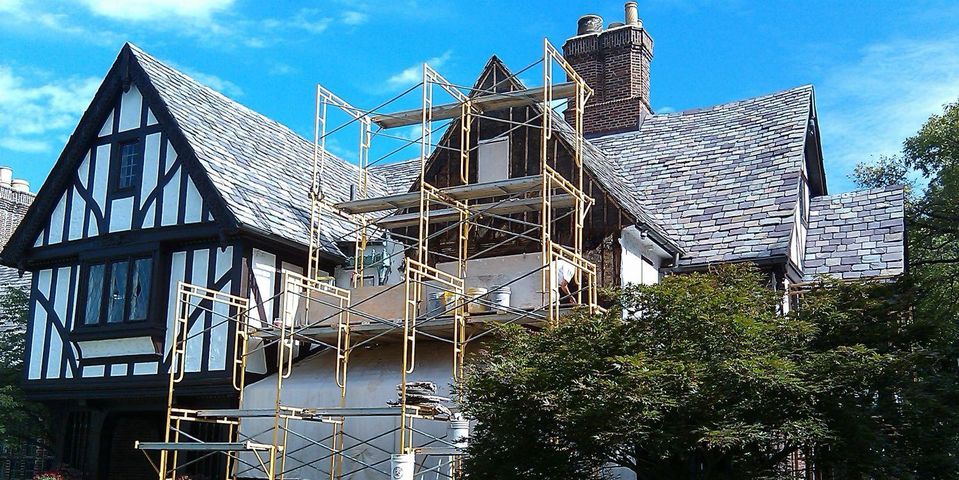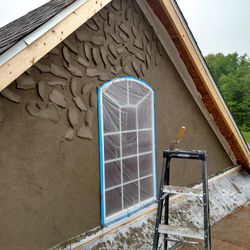
Stucco is a common exterior plaster used in historical homes, applied over logs, brickwork, or lath and wood framing. The repair of this material can be a complicated, multi-step process. If your house is listed on the National Register of Historic Places — or if you want expert restoration as if it were — hire a plastering contractor to repair exterior stucco according to the database’s requirements. Here’s more about this structural, artistic coating and why preservation is paramount.
A Guide to Historical Stucco & Its Preservation
When & How It Was Used
Stucco was used during the early 1800s on Federal, Greek Revival, and Gothic Revival styles homes. Later in the century and during the 1930s and ‘40s, stucco appeared on bungalows in Prairie and Foursquare styles, and in Mission Revival, Spanish Colonial Revival, and Tudor Revival buildings, to name a few. Stucco is so common in historical architecture that it often goes unnoticed as an architectural feature.
Why It Was Popular
Stucco was inexpensive but gave the impression of a costlier finish when scored or textured to appear like stone. It was a practical, weather-proof covering for cheaper framing styles of wood, log, brick, or rubblestone. It could be colored with natural pigments, whitewashed, or painted to deliver a more customized and expensive look.
What It’s Made Of
Historical stucco was made of lime, water, sand, and animal or human hair or straw. Cement was added in the 1820s to increase strength. Other elements — such as waxes and oils from animal products and sugary substances like sugar, wine, or beer — were mixed in to make the stucco water-repellent and decrease the setting time. Local clay, mud, and other substances contributed color.
Considerations for Preservation
Historical stucco is not long-lasting, despite its basic durability. Repair of exterior stucco requires removal of damaged plaster and debris, preparation of the undersurface so that the new plaster will adhere, and expert plastering skills. Analysis of the original composition and techniques used are necessary to replicate the materials accurately. Typically, stucco is damaged by vegetation, the settling of the structure, and water — leaks, rising damp, and persistent humidity. A comprehensive analysis of the cause of damage and the remediation of subsequent issues are indispensable before repairs begin.
Restoration of this common and attractive building material is a meticulous process. Old World Plastering in Cincinnati, OH, offers historical and ornamental plaster repairs, decorative plastering, and stucco restoration. Their plastering craftsmen are highly skilled and offer guaranteed work and results. Call (513) 481-1122 to discuss a project. Visit their website to learn more about their services.
About the Business
Have a question? Ask the experts!
Send your question

